Much like its cuddly namesake, the Panda King
Albeit much, much smaller…
These exotic Asian critters have only recently been discovered, but that hasn’t stopped them from causing panda-monium in the
Well, perhaps not quite as much as their rockstar Cubaris cousins, the Rubber Ducky
In this guide, we’ll cover everything that’s known about these new contenders – laying it all out in black and white – so you can create a thriving colony of your own.
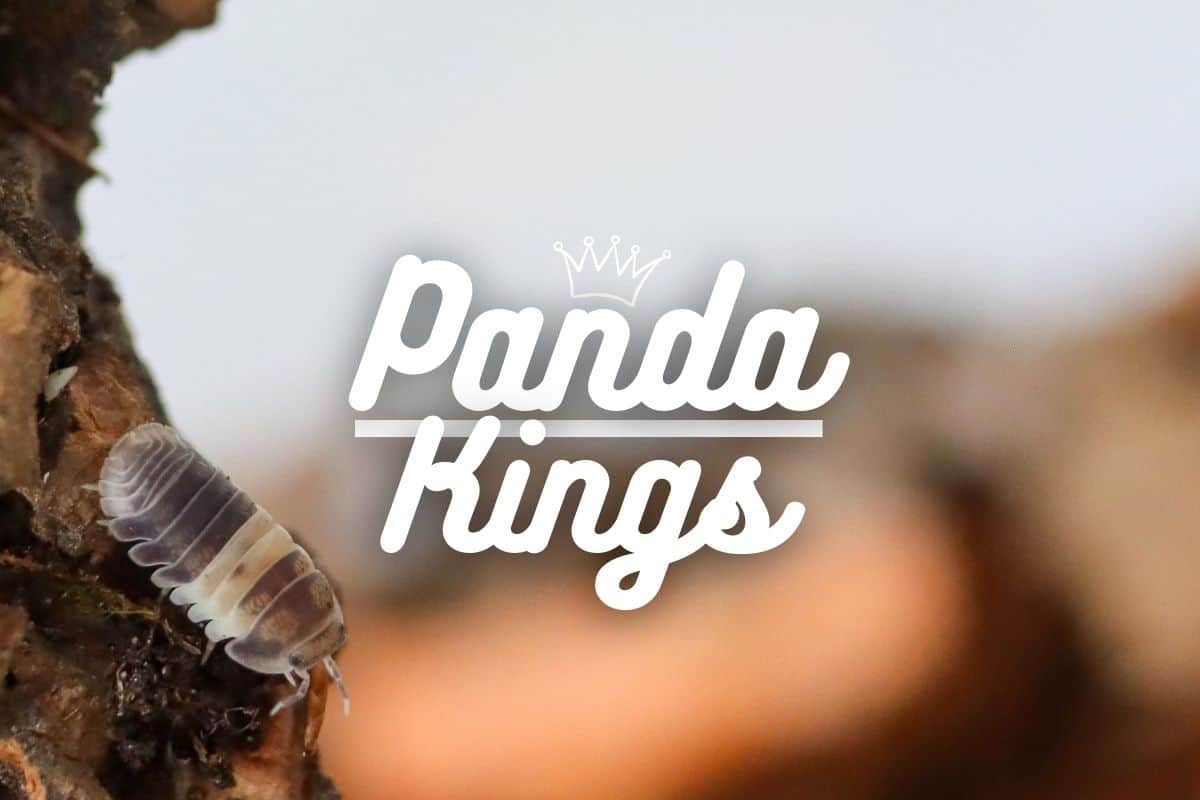
Terrarium Tribe is reader-supported. When you purchase through links on our site, we may earn an affiliate commission (at no further cost to you). 💜
Intro: Panda King Isopod Size & Appearance
The Panda King
Named for its characteristic striped coloration, the Panda King is one of several “Panda” Cubaris species, each with its own unique striping patterns and colors. Though, as a relatively new
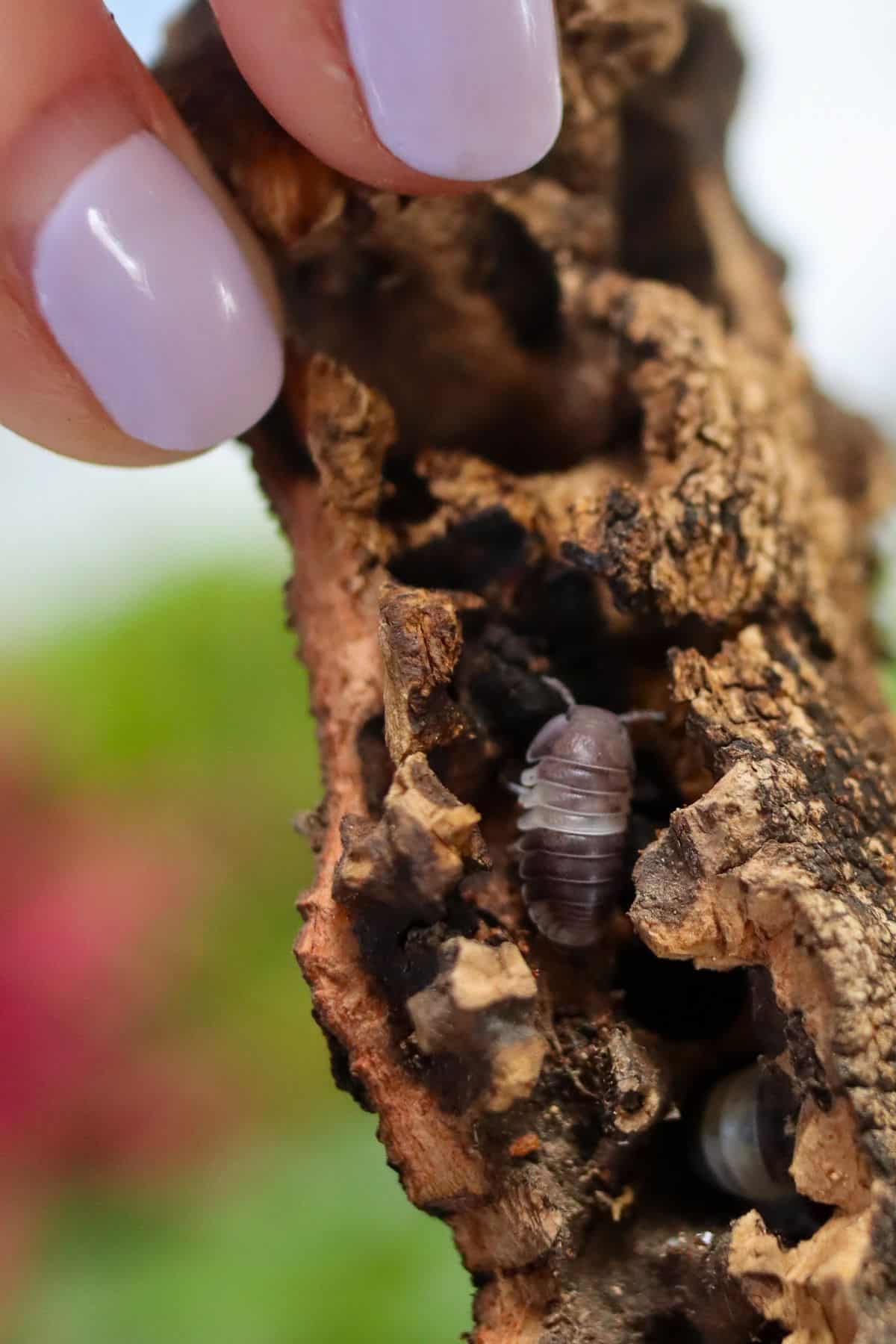
Being a little less popular than the wildly successful Rubber Ducky Isopod, their price is a fair bit lower. Making them a great entry-level Cubaris isopod.
Plus, they’re generally much easier to keep and breed – so they’re much better beginner species too.
They’re great as a pet or as a bioactive custodian in a terrarium or vivarium. So what are you waiting for?
👉 Grab a Panda King Isopod culture here.
Read on to find out how to care for the Panda King
Panda King Isopod Care
Temperature & Humidity
As you might expect from a species found in damp tropical caves, Panda King Isopods love high humidity.
Like 75%+ humidity, ideally.
Which shouldn’t be hard to achieve if you follow the habitat guide in the next section. It really is important, though, as too low a humidity can cause your rare and relatively expensive isopods to dry out and perish.
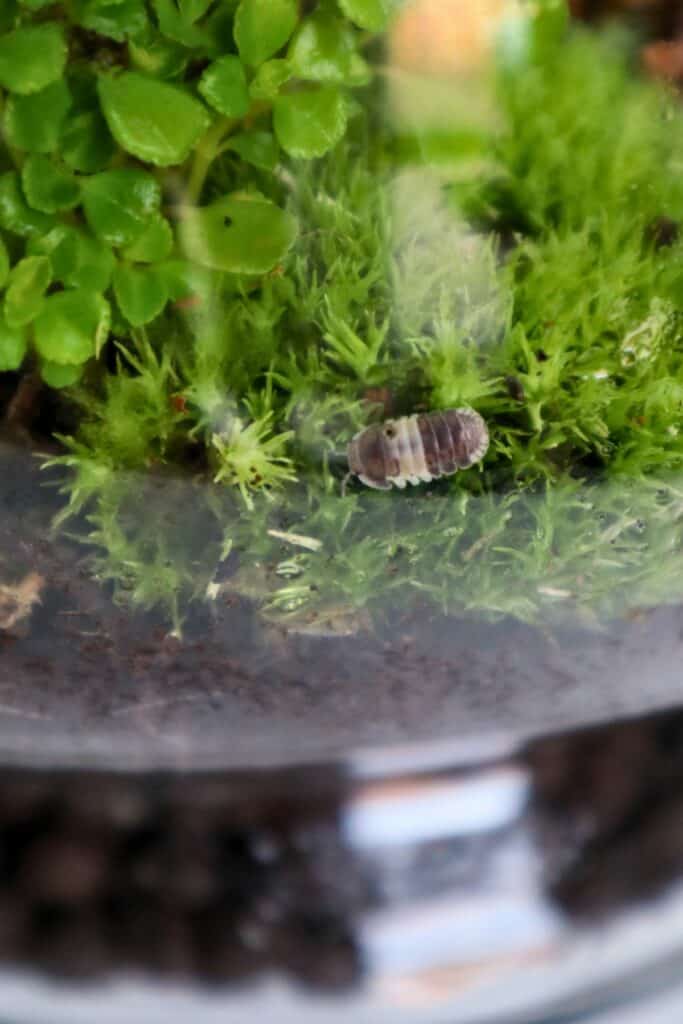
Thankfully, they’re more forgiving on the temperature front. Sharing a typical range of 70-80°F (21-27°C) with the Rubber Ducky Isopods.
Alas, with great humidity comes great power pests. So it’s a good idea to add some springtails to your colony.
They’ll help to keep any would-be pests in check (through out-competing them), plus they’ll tackle any mold growth that your isopods can’t keep up with.
Win-win.
Habitat
With a small to medium-sized species like this one, you can easily manage a new colony with a shoebox-sized container.
A Tupperware box with some holes poked in for ventilation is a quick way to get started, or you can grab one of the specialist enclosures like these ones from EZbotanicals.
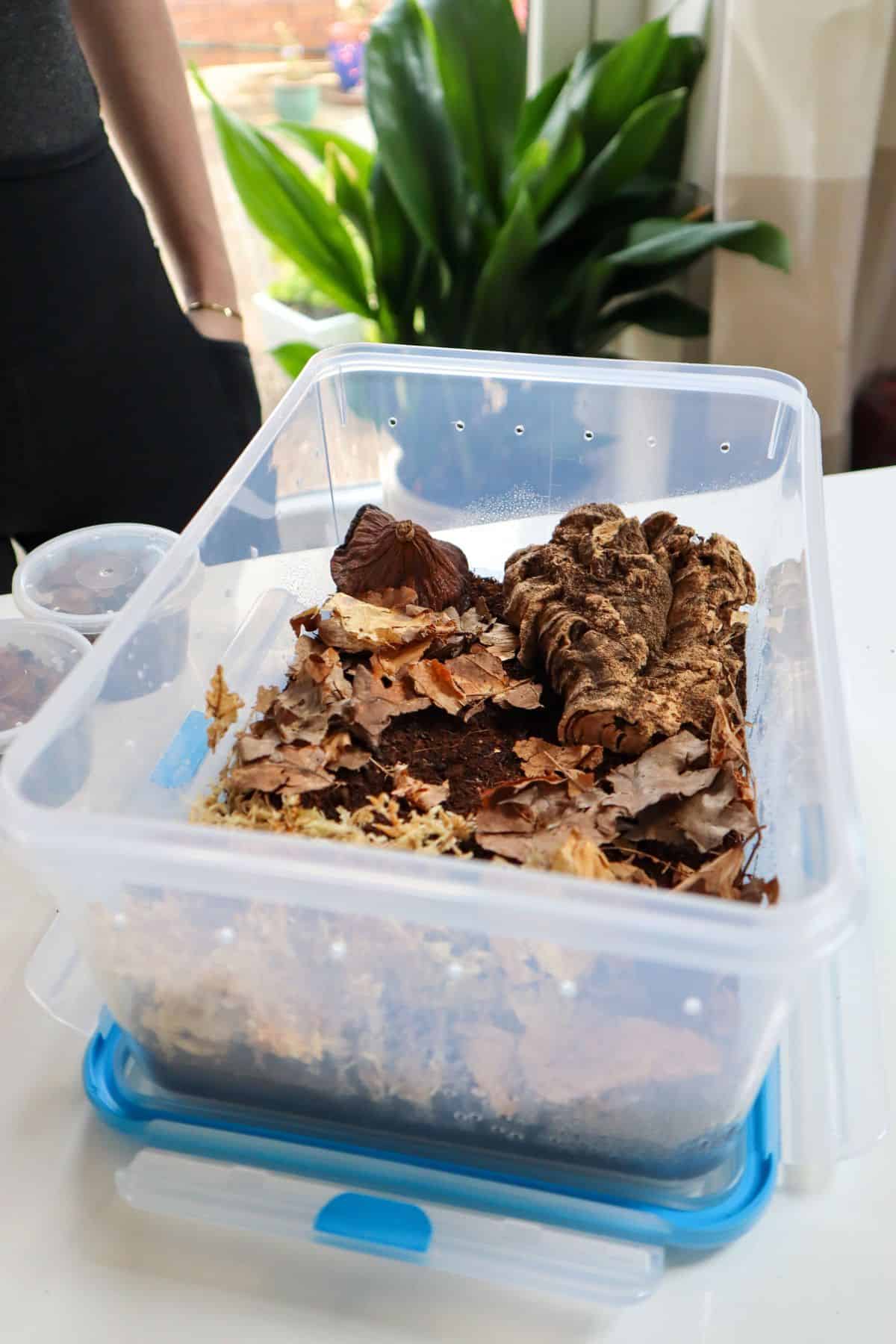
Panda King Isopods seemingly aren’t as sensitive to ventilation as other species, so you can keep the holes to a minimum in order to preserve that all-important humidity.
Just make sure they’re well distributed to maximize airflow through the container.
For your substrate, you can help maintain those high humidity levels by choosing a mix with excellent water retention.
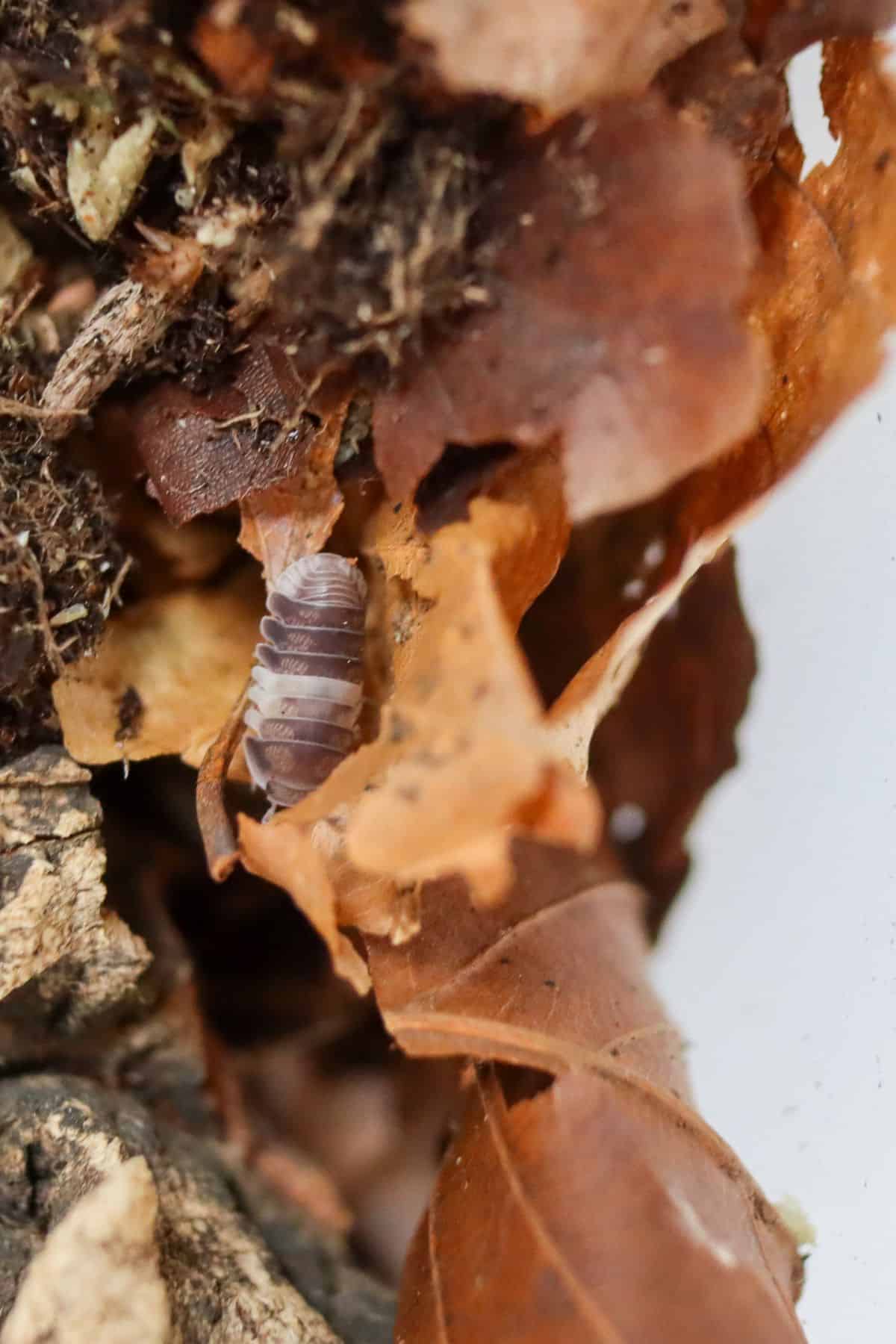
Start with a coco coir base, then supplement with sphagnum moss and orchid bark, and finally, earthworm castings for additional nutrition – a great foundation to keep your isopods fed and watered.
It’s worth noting that Reddit users report that they like to burrow a lot, so they’ll need a reasonable substrate depth to accommodate them. I’ve found that they’re very shy and will often stay undercover, though most of the time, I can’t tell where…
Pro Tip: This is why they’re such excellent bioactive custodians. The burrowing process helps to aerate and replenish substrates, so add them to your larger setups to increase the health of the ecosystem.
Cool right? Though, it also means they can be a little harder to spot.
Be sure to add plenty of softwood branches (like cork bark) and leaf litter too. They’ll really appreciate the natural hiding spots, and it’ll provide a stable source of nutrition for them.
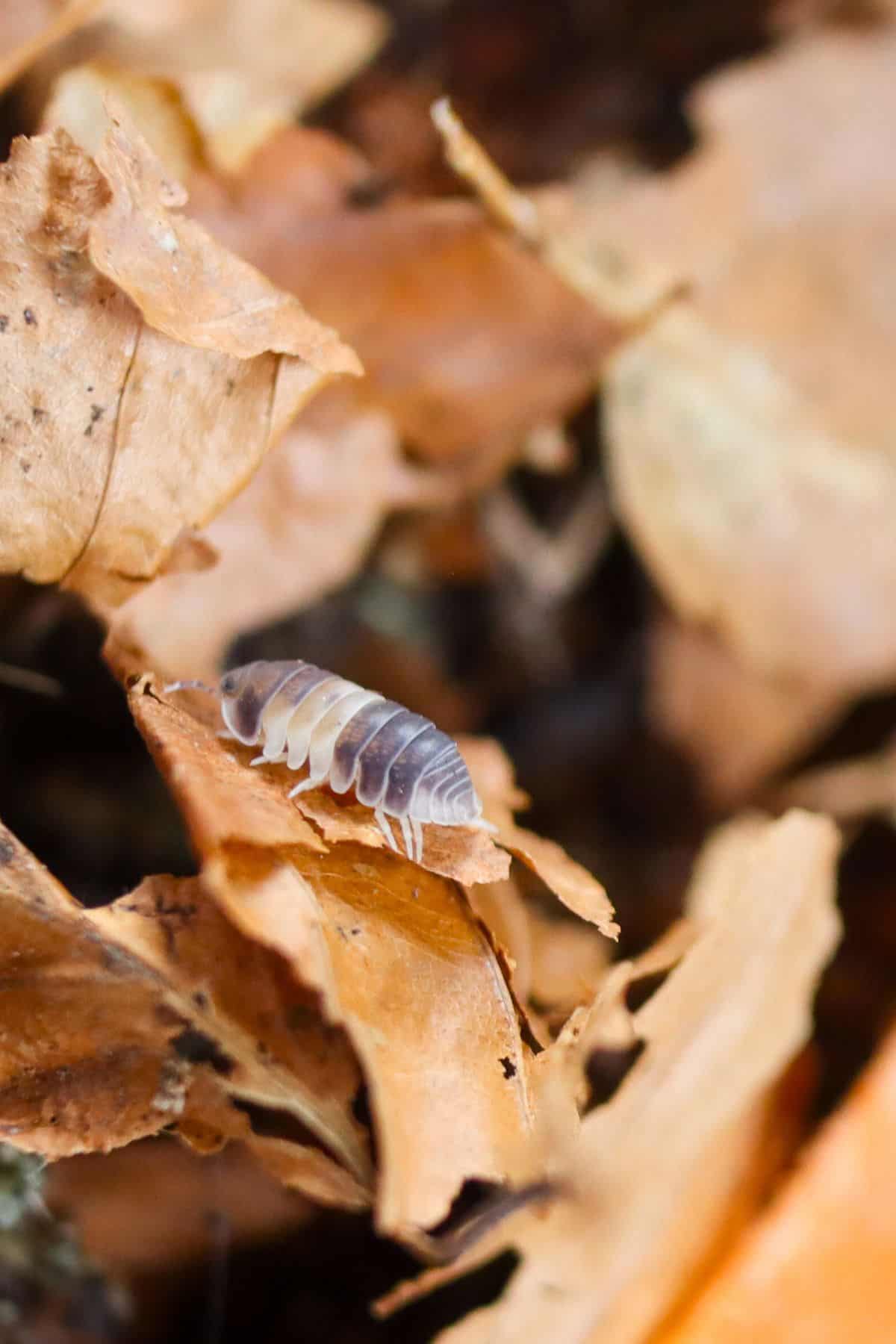
👉 Grab a bag of organic Oak Leaf Litter.
Food
Panda Isopods eat a wide and varied diet of detritus and food scraps.
Though rotting wood and leaf litter should form the backbone of any
Freeze-dried shrimp and minnows make a nutritious protein snack, or fish flakes can often work in a pinch.
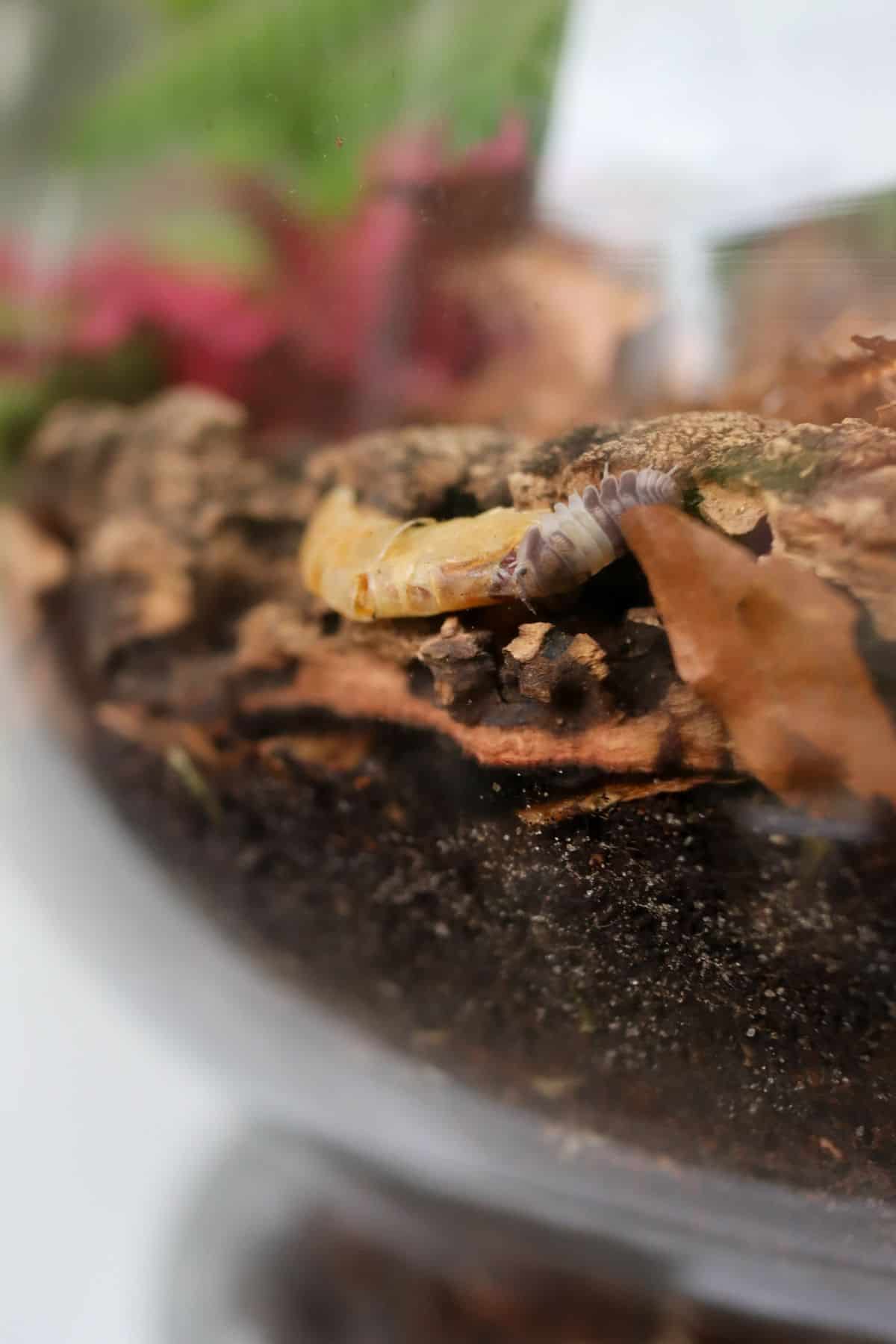
As with other Cubaris species, a sprinkling of crushed limestone is a crucial element of their diet too – designed to mimic their natural cave habitat.
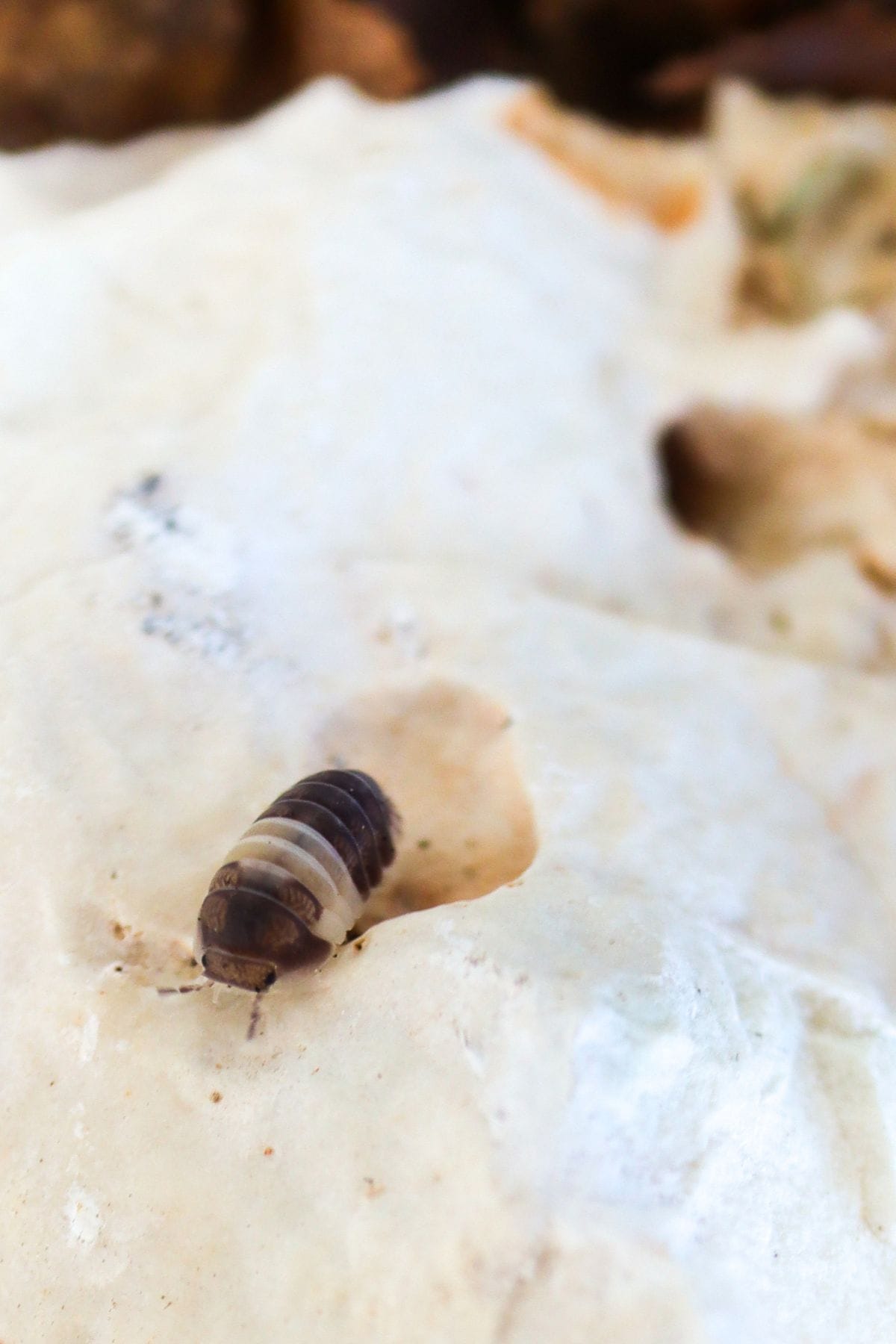
Cuttlebone and eggshells can be other helpful supplementary calcium sources.
With any food you add, be sure to only add an amount that you think your colony can finish in one sitting. Food can quickly spoil in a high-humidity enclosure, inviting a mold and pest party that can quickly spiral out of control.
That’s what makes our Isopod Superfood Powder so easy and convenient. Developed by the experts at Rubber Ducky Isopods, it’s packed full of nutrition in every sprinkle (including protein and calcium), so a little goes a long way!
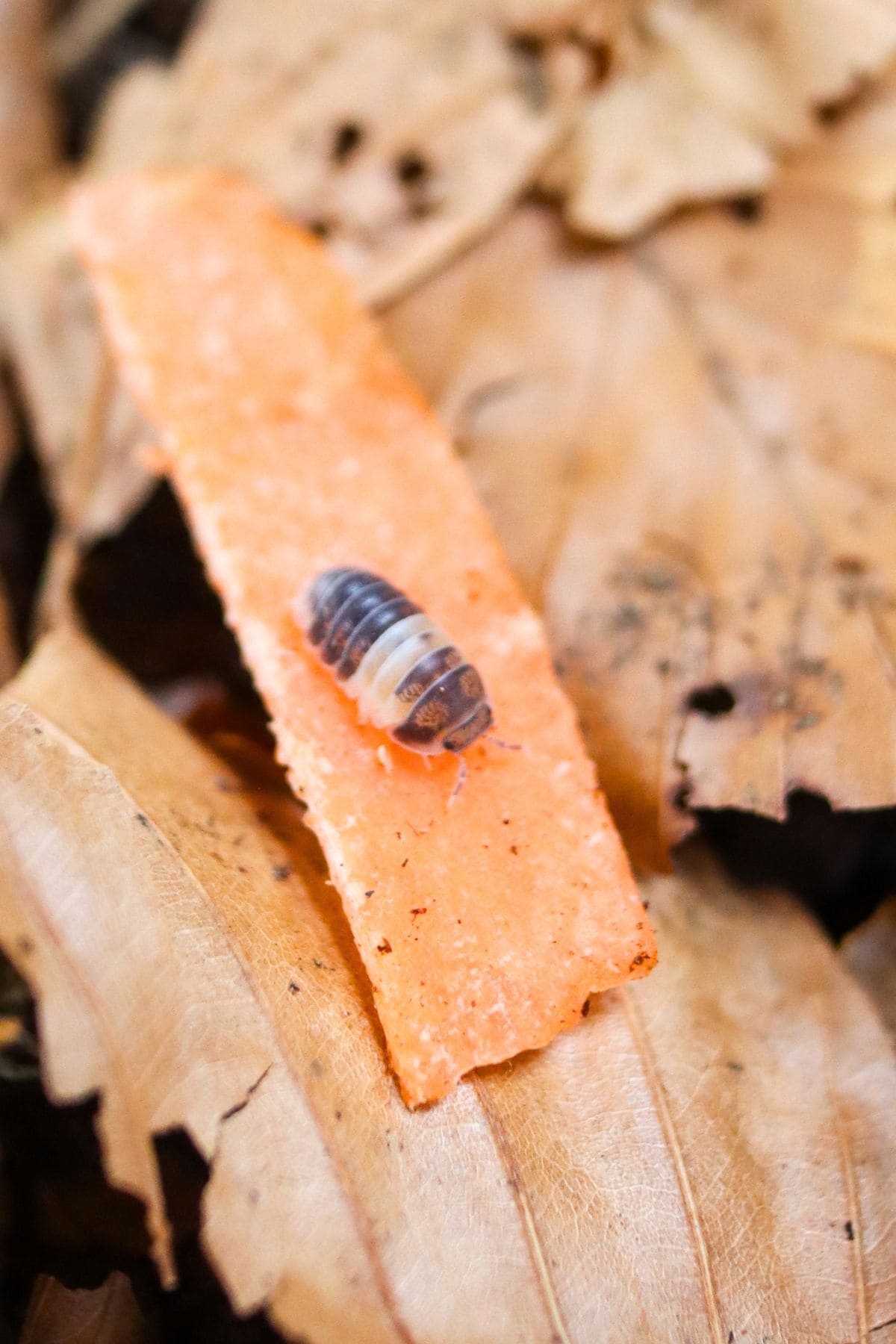
For more help, check out my Isopod Food Guide.
Breeding Panda King Isopods
Thankfully, these isopods breed a lot better than their namesake panda bears.
I’m pleased to hear that these actually reproduce reasonably well for a Cubaris species, and certainly a lot better than their Rubber Ducky counterparts. Which isn’t difficult, to be fair…
Much like the Little Sea Isopods (Cubaris murina), they’re still slow to start. It may take several months to settle in first, but under the right conditions, your patience will be rewarded.
Where to Find Panda King Isopod for Sale
Being an exciting species on the market, Panda King Isopods are beginning to be stocked more widely online.
So, as the cousin of the Rubber Ducky Isopods, it’s only natural we’d partner with the expert breeders from Rubber Ducky Isopods to sell them directly on our online store.
Each culture comes securely housed in sphagnum moss, with an ample supply of leaf litter and superfood to keep them fed and happy for the journey.
Wrapping Up
There you have it, everything there is to know about Panda King Isopods.
Or, do you have some unique insights that I’ve missed out?
Let me know in the comments.
Alternatively, if you’re in need of more

Hi, just wondered for sprinkling limestone. Is using calcium powder the same or do you need limestone granules/something else? Thanks!
Hi Holly, calcium powder is probably a reasonable supplement for most isopods, but for Cubaris isopods (like the Panda Kings), I’d personally stick with pulverized limestone as that matches their native environment best.